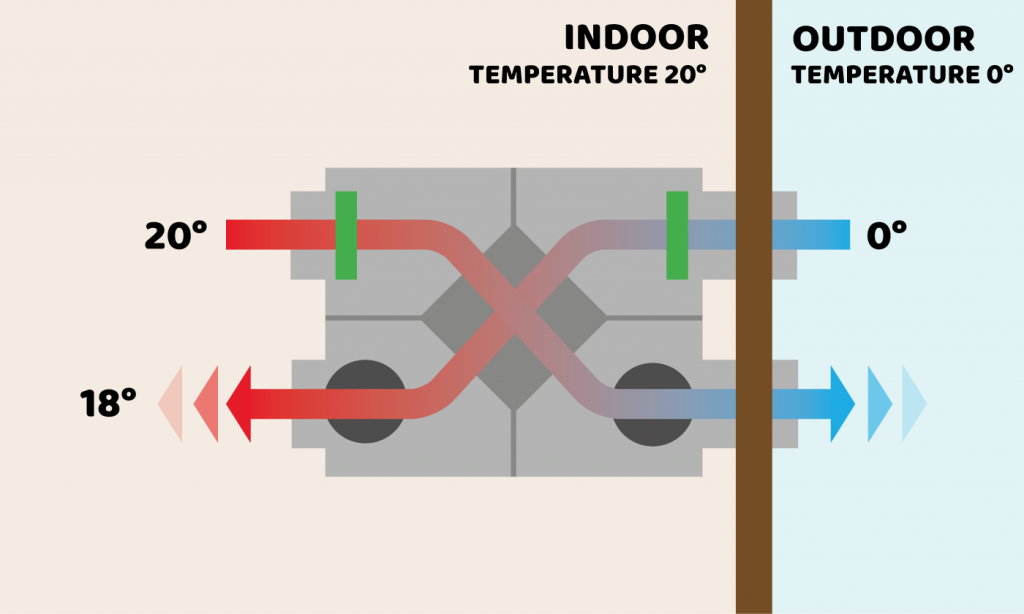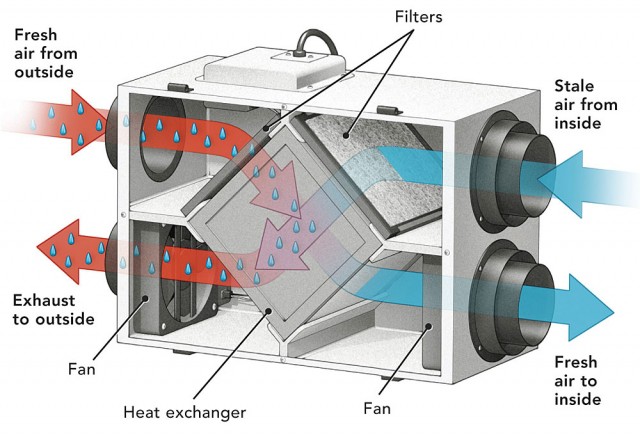How HRV Ensures a Cleaner Indoor Living Environment
Wiki Article
The All-Inclusive Overview to the Uses of Heat Recovery Ventilation in Modern Buildings
Heat Recovery Ventilation (HRV) systems stand for a substantial innovation in developing technology (HRV Heat Recovery Ventilation). They give a technique for trading stale interior air with fresh outdoor air while reducing power loss. This strategy not only boosts indoor air top quality but additionally contributes to power effectiveness in both residential and business buildings. Comprehending the various applications and benefits of HRV can disclose its crucial duty in modern style and sustainability initiatives. The implications of this modern technology are worth discovering even moreUnderstanding Heat Recovery Ventilation Solutions

Many modern buildings focus on energy performance, comprehending warm healing air flow (HRV) systems is essential for optimizing interior air high quality and decreasing power intake. HRV systems work by moving warmth from stagnant interior air to inbound fresh air, effectively preserving comfortable indoor temperatures while decreasing energy loss. These systems include a warm exchanger, followers, and ductwork that assist in the blood circulation of air. Throughout winter, HRV units capture and reuse warm from the outward bound air, while in summer season, they can aid cool down inbound air. By continually trading air, HRV systems additionally lower moisture and the focus of interior contaminants. Appropriate installation and upkeep of HRV systems are important for their performance and efficiency in improving general building efficiency and convenience.
Benefits of Heat Recovery Ventilation
Heat recovery ventilation systems provide numerous advantages that enhance both energy effectiveness and indoor air quality in modern structures. By catching and recycling energy from exhaust air, these systems considerably decrease cooling and heating costs, leading to reduced energy intake. They keep a stable circulation of fresh outside air, minimizing the threat of indoor air pollutants and irritants. This constant exchange aids manage humidity degrees, stopping mold development and ensuring a much healthier living atmosphere. Additionally, HRV systems add to sustainability goals by reducing overall carbon footprints. Their capacity to enhance air flow without giving up thermal comfort makes them a valuable addition to modern building style, advertising both economic and environmental advantages.Applications of HRV in Residential Buildings
As home owners progressively focus on power efficiency and indoor air top quality, the applications of heat healing air flow (HRV) systems in domestic structures have actually come to be more common. HRV systems are especially beneficial in securely secured homes, where keeping fresh air circulation is vital for protecting against moisture build-up and indoor contaminants. They successfully move warmth from outward bound stale air to incoming fresh air, decreasing energy prices connected with heating & cooling. In addition, HRVs can enhance convenience degrees by controling humidity and temperature level. helpful resources They are additionally versatile for numerous domestic layouts, consisting of single-family homes and multi-unit structures. Generally, integrating HRV systems supports sustainable living techniques while guaranteeing a much healthier interior atmosphere for passengers.HRV in Industrial and Industrial Settings
In commercial and commercial setups, the implementation of heat recovery ventilation (HRV) systems has become increasingly important for enhancing power effectiveness and preserving air top quality. These systems properly move warmth from exhaust air to inbound fresh air, minimizing the requirement for additional home heating or air conditioning. This not only lowers power prices however also adds to sustainability campaigns. Industries such as manufacturing, warehousing, and office structures benefit significantly from HRV systems, as they help regulate temperature and moisture levels, making certain a comfy and productive setting. Moreover, HRV systems aid in getting rid of pollutants and excess moisture, improving interior air quality. As regulations around air top quality end up being stricter, the fostering of HRV technology is likely to grow, making it a crucial part of modern business and industrial facilities.Future Trends in Heat Recovery Ventilation Innovation

Regularly Asked Questions
Just How Does Heat Recovery Ventilation Impact Indoor Air Quality?
Heat recovery ventilation considerably improves indoor air quality by continuously trading stale indoor air with fresh outside air while recuperating energy. This process minimizes toxins, maintains ideal moisture degrees, and ensures a healthier environment for owners.Can HRV Equipments Be Set Up in Existing Structures?
HRV systems can indeed be mounted in existing buildings. Retrofitting may call for alterations to ductwork and ventilation layouts, yet it significantly enhances power efficiency and interior air high quality, making it a practical option for older frameworks.What Upkeep Is Needed for HRV Solutions?

Exist Certain Climates Where HRV Is Much More Reliable?
Heat recovery ventilation systems are specifically efficient in environments with considerable temperature distinctions between periods. These systems optimize power effectiveness by recovering warmth from exhaust air, making them optimal for both cold and reasonably warm settings.Exactly How Do HRV Equipments Affect Energy Costs?

Report this wiki page